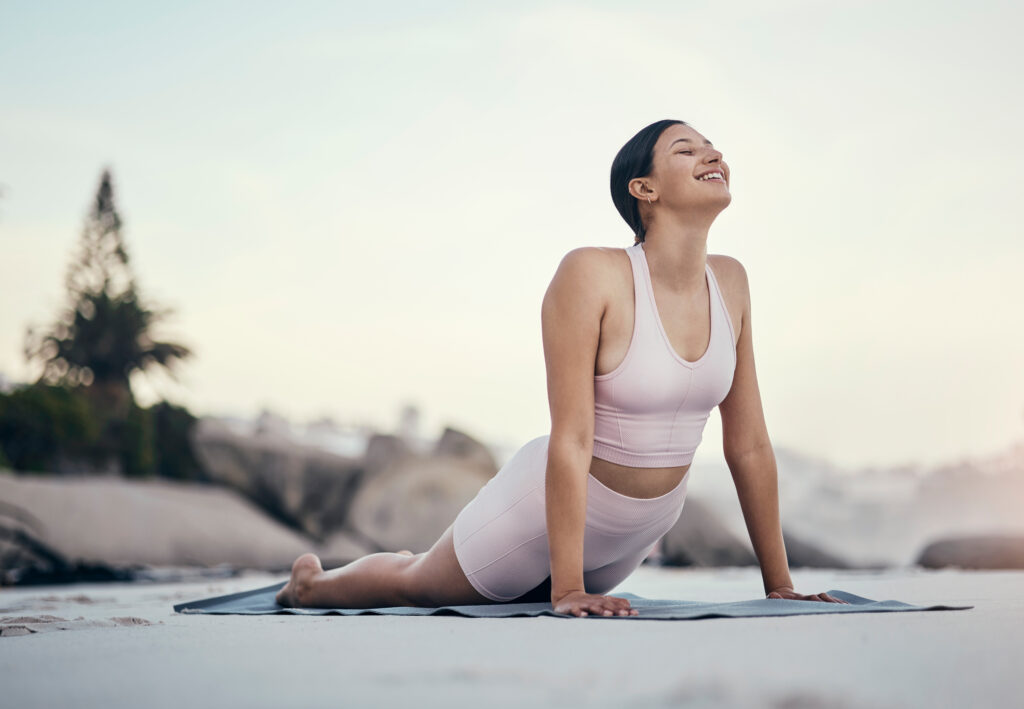Fit for Success: The Role of Exercise in Daily Productivity
Exercise is a key ingredient to living a healthy, productive life. Fit for success, regular physical activity can increase energy levels, reduce stress, and improve focus and concentration. By making exercise part of our daily routine, we can reap the benefits of improved performance, better moods, and an overall healthier lifestyle.
In this blog post, we will look at how exercise can act as a catalyst for increased productivity and wellness. Let’s dive in!
The Benefits of Exercise on the Mind and Body

We all know that exercise is good for us, but have you ever stopped to consider why?
Exercise has a wide range of benefits that go far beyond just improving physical health. It’s a well-known fact that exercise can help you lose weight, build muscle, and improve cardiovascular health. But did you know that exercise can also boost your mood, increase brain function, and help reduce the risk of chronic diseases like heart disease, diabetes, and certain cancers?
When you exercise, your body releases endorphins, which are chemicals that make you feel good. These endorphins act as natural painkillers and can create a sense of well-being that can last for hours after your workout. Exercise has also been shown to help reduce symptoms of depression and anxiety. In fact, studies have found that exercise can be just as effective as medication in treating depression.
Exercise also has numerous benefits for the brain. Regular exercise has been shown to improve cognitive function, including memory, attention, and learning. Exercise has also been linked to a reduced risk of age-related cognitive decline and dementia.
When it comes to physical health, exercise is essential for maintaining a healthy weight, building and maintaining muscle mass, and improving cardiovascular health. Regular exercise can help lower blood pressure, reduce cholesterol levels, and reduce the risk of heart disease.
The Relationship Between Exercise and Productivity

Have you ever noticed how much more energized and focused you feel after a good workout? Exercise not only helps improve physical health but also has a profound impact on mental health and productivity.
When you exercise, your body releases endorphins – feel-good chemicals that reduce stress and improve mood. Studies have shown that regular exercise can lead to decreased anxiety and depression symptoms, as well as improved self-esteem and cognitive function.
Additionally, exercise has been found to increase blood flow to the brain, promoting better concentration and memory retention. This means that after a good workout, you may find yourself feeling more alert and focused, with an increased ability to tackle challenging tasks and make important decisions.
Incorporating regular exercise into your daily routine can also help establish a sense of discipline and routine, leading to improved time management skills and productivity. By making exercise a priority in your schedule, you are more likely to set aside time for other important tasks and follow through on commitments.
Furthermore, regular exercise has been linked to improved sleep quality and duration, which can have a significant impact on productivity. With better sleep, you may find yourself waking up feeling refreshed and ready to tackle the day’s challenges.
In short, exercise plays a crucial role in improving both physical and mental health, leading to increased productivity and success in all aspects of life. So next time you’re feeling sluggish or unmotivated, consider incorporating a quick workout into your routine and see the positive impact it has on your productivity.
Incorporating Exercise into Your Daily Routine

Now that we’ve talked about the many benefits of exercise, let’s discuss how to make it a part of your daily routine.
Here are some tips to help you get started:
- Start small. Don’t overwhelm yourself by trying to do too much at once. Instead, start with just a few minutes of exercise each day and gradually increase the duration and intensity over time.
- Make it a priority. Treat exercise as you would any other important appointment or task. Schedule it into your calendar and make it a non-negotiable part of your day.
- Choose activities you enjoy. You’re more likely to stick with exercise if you find activities that you actually enjoy. Whether it’s dancing, hiking, or yoga, find something that feels fun and engaging.
- Find an accountability partner. Having someone to hold you accountable can be incredibly helpful in sticking to your exercise routine. Find a friend or family member who shares your fitness goals and work out together.
- Make it convenient. Choose exercises that can easily fit into your schedule and can be done at home or in your neighborhood. If you have to travel to a gym or studio, you may be less likely to follow through with your workouts.
Remember, exercise doesn’t have to be a burden or something you dread. With a little creativity and commitment, you can find ways to make fitness an enjoyable and rewarding part of your daily routine.
Choosing the Right Exercise Program for You

One of the keys to success in establishing an exercise routine is finding the right program for you. The best exercise program is one that fits your fitness goals, lifestyle, and personal preferences.
If you’re just starting out, it’s best to begin with something simple, such as a daily walk or jog. These activities are easy to incorporate into your daily routine, require minimal equipment, and can be done at your own pace.
If you’re looking for a more intense workout, consider strength training or high-intensity interval training (HIIT). These workouts are great for building muscle and boosting metabolism. However, they require more time and equipment than walking or jogging, so you’ll need to plan accordingly.
Another option is to try a group fitness class, such as yoga or Zumba. These classes offer the added benefit of social interaction and support, which can help keep you motivated.
When choosing an exercise program, it’s important to consider your personal preferences and fitness goals. Do you prefer to exercise alone or with others? Are you looking to build muscle or lose weight? Are you looking for a low-impact workout or a high-intensity workout? The answers to these questions will help you determine the best exercise program for you.
Remember, it’s important to listen to your body and start slowly. If you’re new to exercise, it’s best to start with low-intensity workouts and gradually increase the intensity over time. This will help prevent injury and ensure long-term success.
In summary, choosing the right exercise program for you is crucial in establishing a sustainable exercise routine. Consider your personal preferences, fitness goals, and lifestyle when making your decision. And remember, start slowly and listen to your body.
Overcoming Common Barriers to Exercise

We all have different reasons for why we might find it challenging to exercise regularly.
Here are some common barriers to exercise and some strategies for overcoming them:
- Time Constraints. With busy work and family schedules, it can be tough to find time for exercise. One way to overcome this is by making exercise a priority and scheduling it into your day. Consider waking up earlier to get in a morning workout or using your lunch break to take a walk or attend a fitness class.
- Lack of Motivation. Sometimes we just don’t feel like exercising, but it’s important to push through those feelings to reap the benefits. Try setting small goals for yourself, finding an exercise buddy to hold you accountable, or finding a form of exercise that you truly enjoy.
- Injury or Physical Limitations. If you have an injury or physical limitation that prevents you from engaging in certain types of exercise, don’t let it stop you altogether. Work with a doctor or physical therapist to find exercises that are safe for you and can help improve your overall fitness level.
- Financial Constraints. Gym memberships and exercise equipment can be expensive, but there are plenty of free or low-cost options available. Consider taking advantage of free outdoor spaces, downloading workout apps, or looking for budget-friendly gym options in your area.
By identifying and addressing these common barriers, you can develop a sustainable exercise routine that will help you achieve your goals and improve your overall health and well-being.
Ready to sell your property? Give us a call today and learn more about our professional photography services and marketing that can boost your property listing!
Plus, explore our virtual assistant coaching program to level up your business. Don’t forget to tune into our new podcast for even more valuable insights!
